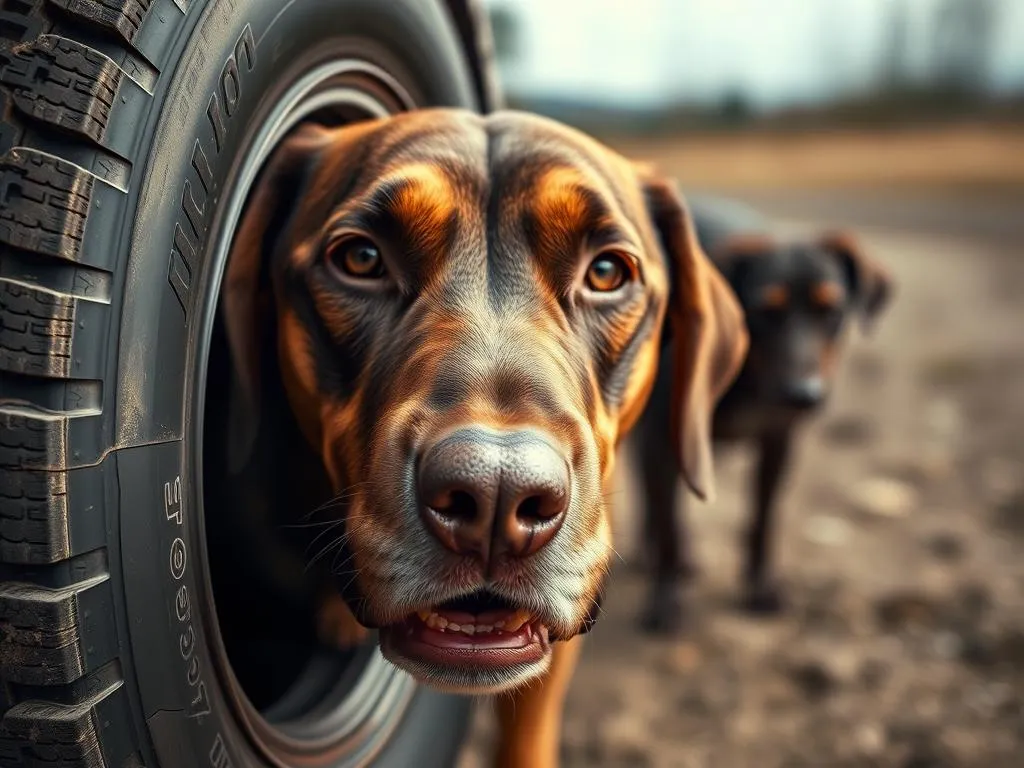
Introduction
Imagine a sunny afternoon where your dog, usually bursting with energy, lies contentedly on the floor, completely worn out after a fun training session. This scenario is not uncommon among dog owners who incorporate nose work into their pets’ routines. Nose work is not just a passing trend; it has roots in scent detection training used by working dogs and has evolved into a fantastic way for all dogs to engage their minds and bodies.
Nose work involves teaching dogs to use their incredible sense of smell to locate hidden scents, and it can be a game-changer for both dogs and their owners. Does nose work tire dogs out? Absolutely! This engaging activity offers both mental and physical stimulation, which is crucial for a dog’s overall well-being. In this article, we will delve into how nose work can effectively tire dogs out, the science behind it, and how you can incorporate it into your dog’s daily routine.
Understanding Dog Exhaustion
Types of Dog Exhaustion
When we think about tiring our dogs out, we often focus on physical exhaustion. Activities like running, playing fetch, or going for long walks are typically the go-to methods for dog owners. However, it’s important to recognize that dogs can also experience mental exhaustion. Just like humans, dogs can become fatigued from cognitive challenges, which often leads to a calmer and more content pet.
The Role of Mental Stimulation
Mental stimulation plays a critical role in a dog’s happiness and behavior. While physical exercise is vital, it’s often the mental challenges that can truly tire dogs out. For instance, a short but intense session of nose work can leave your dog just as exhausted as a long run. The benefits of mental stimulation include improved behavior, reduced anxiety, and an overall happier dog.
What is Nose Work?
Definition and Overview
Nose work is a dog sport that involves teaching dogs to locate specific scents. Originating from detection work done by search and rescue and police dogs, it has been adapted for dogs of all breeds and ages. The fundamental concept is simple: by using their sense of smell, dogs can seek out hidden scents, usually food or specific odors.
Types of Nose Work Activities
There are several types of nose work activities that can be tailored to your dog’s abilities:
- Tracking: Following a specific scent trail, often laid out by a person.
- Searching: Finding hidden objects or food in various environments.
- Detection: Identifying specific scents, often used in scent detection sports.
Benefits of Nose Work
Nose work has a plethora of benefits for dogs:
- Cognitive Benefits: It enhances focus, boosts problem-solving skills, and improves decision-making.
- Physical Benefits: Engaging in nose work utilizes various muscle groups and offers low-impact exercise, making it suitable for dogs of all ages.
How Nose Work Tires Dogs Out
The Science Behind Scent Work
Dogs’ sense of smell is extraordinarily powerful—estimated to be 10,000 to 100,000 times more acute than that of humans. This incredible ability means that when dogs engage in nose work, they are not just sniffing; they are processing a vast amount of information, which can be mentally taxing.
Cognitive Load
Engaging their olfactory senses demands a significant amount of brain power from dogs. The cognitive load associated with scent work can lead to mental exhaustion. As dogs use their nose to search and sniff, they tap into their instincts and problem-solving abilities, leading to tiredness that is often more profound than that experienced after physical exertion.
Real-Life Examples
Many dog owners have reported noticeable changes in their pets after incorporating nose work into their routines. For instance, a high-energy Border Collie named Max would often bounce off the walls after regular walks but would settle down peacefully after just 20 minutes of nose work training. Similarly, a rescue dog named Bella, who struggled with anxiety, found comfort and focus in scent detection activities, leading to reduced stress levels and improved behavior.
Expert Opinions
Trainers and veterinarians have increasingly recognized the benefits of nose work. According to dog trainer Sarah McCarthy, “Nose work is a fantastic way to provide mental stimulation for dogs. Many of the behavioral issues we see stem from boredom and lack of engagement. Nose work fills that gap.”
Implementing Nose Work in Daily Routine
Getting Started with Nose Work
Starting nose work doesn’t have to be complicated. Here are a few basic nose work activities you can do at home:
- Hide and Seek: Hide treats or toys around the house and encourage your dog to find them.
- Cup Game: Place a treat under one of three cups and shuffle them around. Let your dog sniff out the correct one.
- Scent Trails: Create a scent trail with treats leading to a hidden reward.
Tools and Resources
To enhance the experience, consider using tools like scent kits or toys specifically designed for nose work. These can help your dog learn to identify and search for specific scents more effectively.
Structuring Nose Work Sessions
For effective training, structure your nose work sessions by keeping them short and engaging. Aim for 15 to 30 minutes of focused activity a few times a week. As your dog becomes more proficient, gradually increase the difficulty to keep them challenged and engaged.
Comparing Nose Work to Other Activities
Nose Work vs. Traditional Physical Exercise
When comparing nose work to traditional physical exercises like fetch or running, both have their merits, but nose work often proves more effective in tiring dogs out. While physical activities expend energy, the mental engagement of nose work can lead to a more profound sense of tiredness, leaving dogs relaxed and content.
Nose Work vs. Other Mental Stimulation Activities
When considering alternatives like puzzle toys or basic training, nose work stands out due to its interactive nature. While puzzle toys can stimulate a dog’s mind, the sensory experience and instinctual engagement of nose work often lead to more significant mental fatigue and satisfaction.
Common Misconceptions About Nose Work
It’s Only for Working Dogs
A common misconception is that nose work is only suitable for working breeds or dogs with specific training backgrounds. In reality, nose work is for all dogs, regardless of breed or age. Any dog can learn to use their nose effectively, and the activity can be tailored to fit their individual comfort levels.
Nose Work is Too Complicated
Another myth is that nose work is too complicated for the average dog owner. In truth, it can be quite simple. With a few basic exercises and a little guidance, anyone can introduce their dog to the joys of scent work. Starting with straightforward games can build confidence and excitement in both dogs and their owners.
Conclusion
In summary, nose work is a versatile and rewarding activity that can effectively tire dogs out both mentally and physically. By engaging their powerful sense of smell, dogs experience significant mental stimulation and physical engagement that contributes to their overall well-being. The benefits of nose work extend beyond just tiring out your dog; it fosters a deeper bond between you and your furry friend while enhancing their focus and problem-solving skills.
Final Thoughts
Incorporating nose work into your dog’s routine not only enriches their life but also brings joy and satisfaction to both of you. As you embark on this exciting journey of scent discovery, remember that the engagement and fun you share will make the experience worthwhile. So grab some treats, hide them around your home, and watch as your dog delights in the thrill of the hunt!









